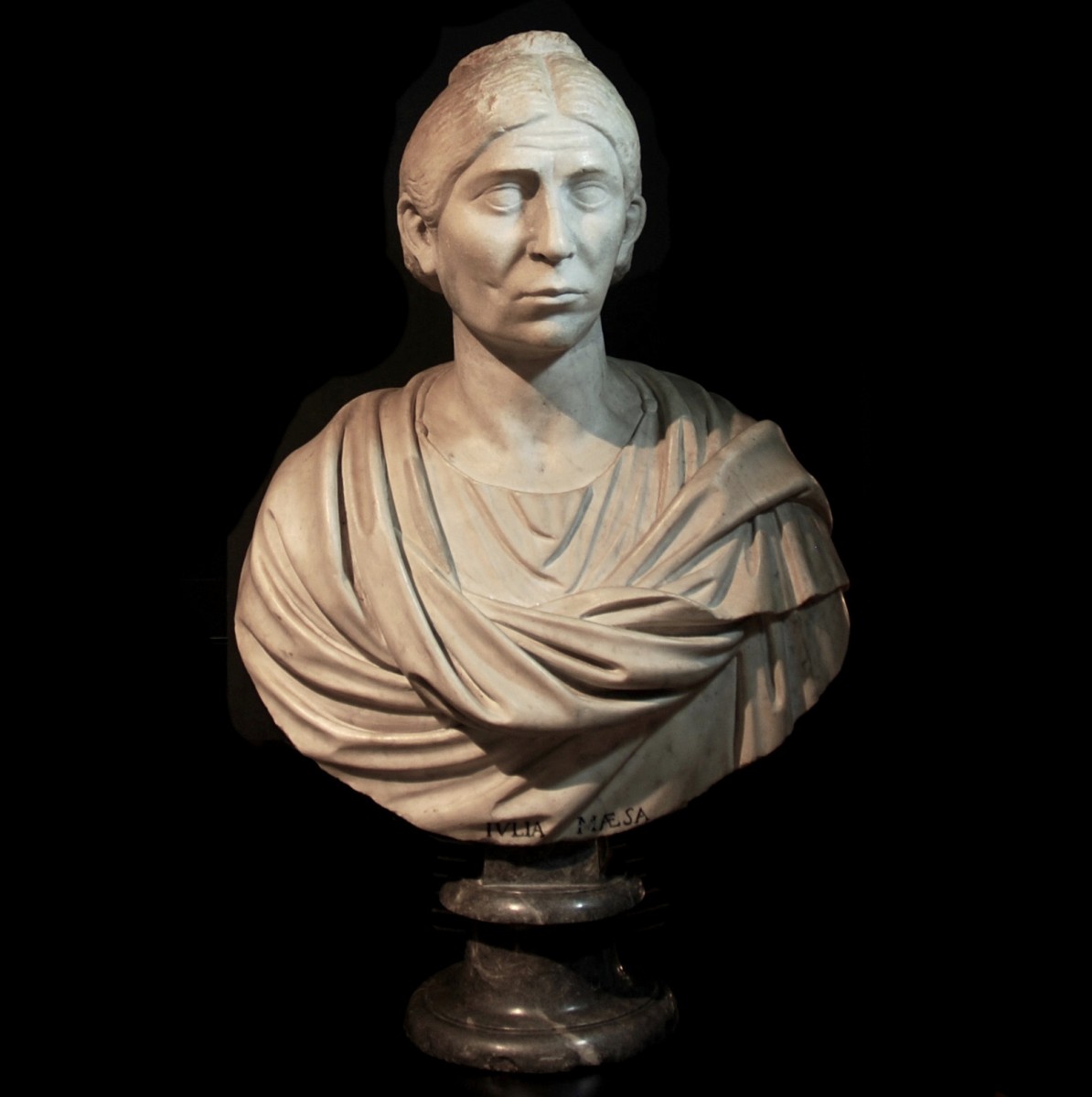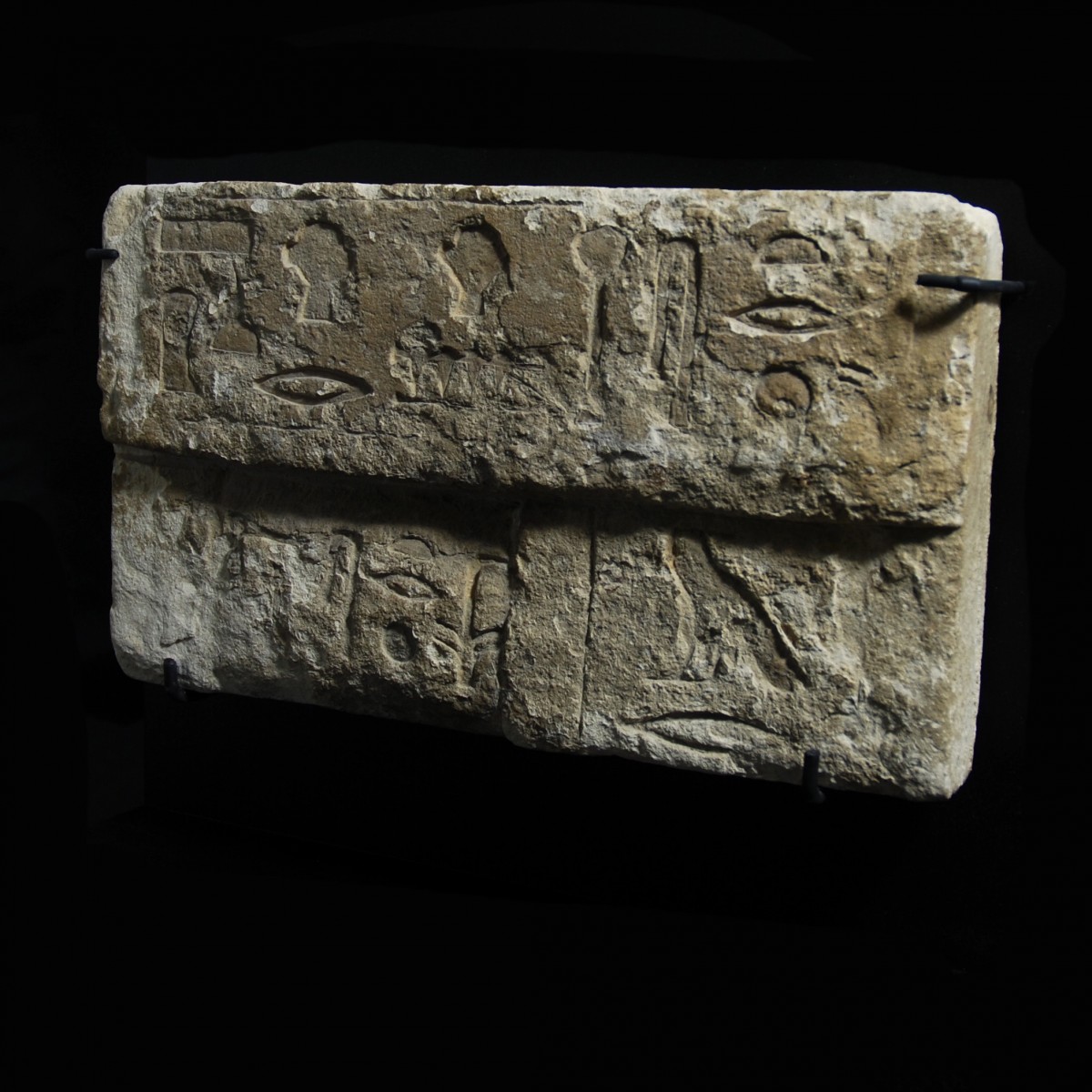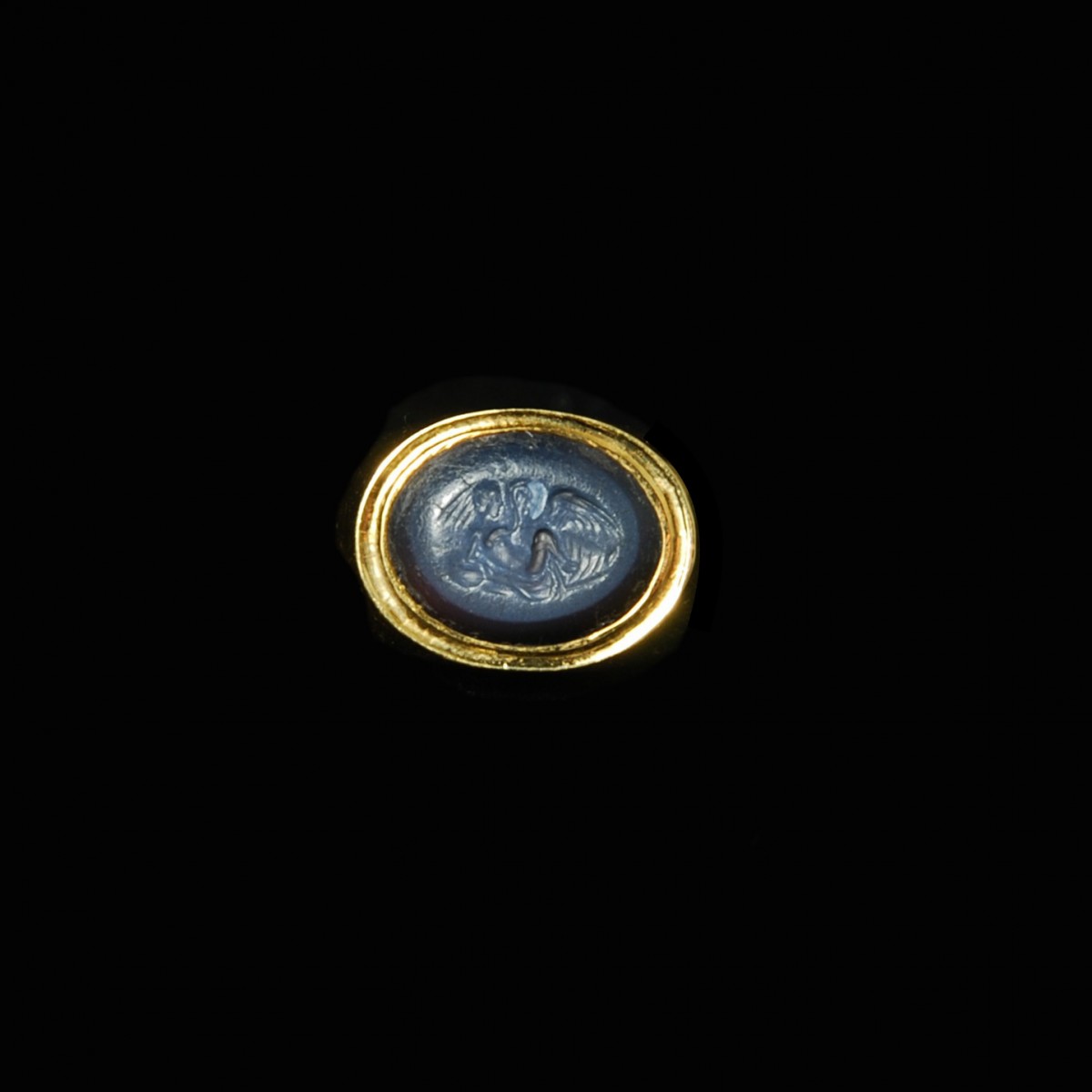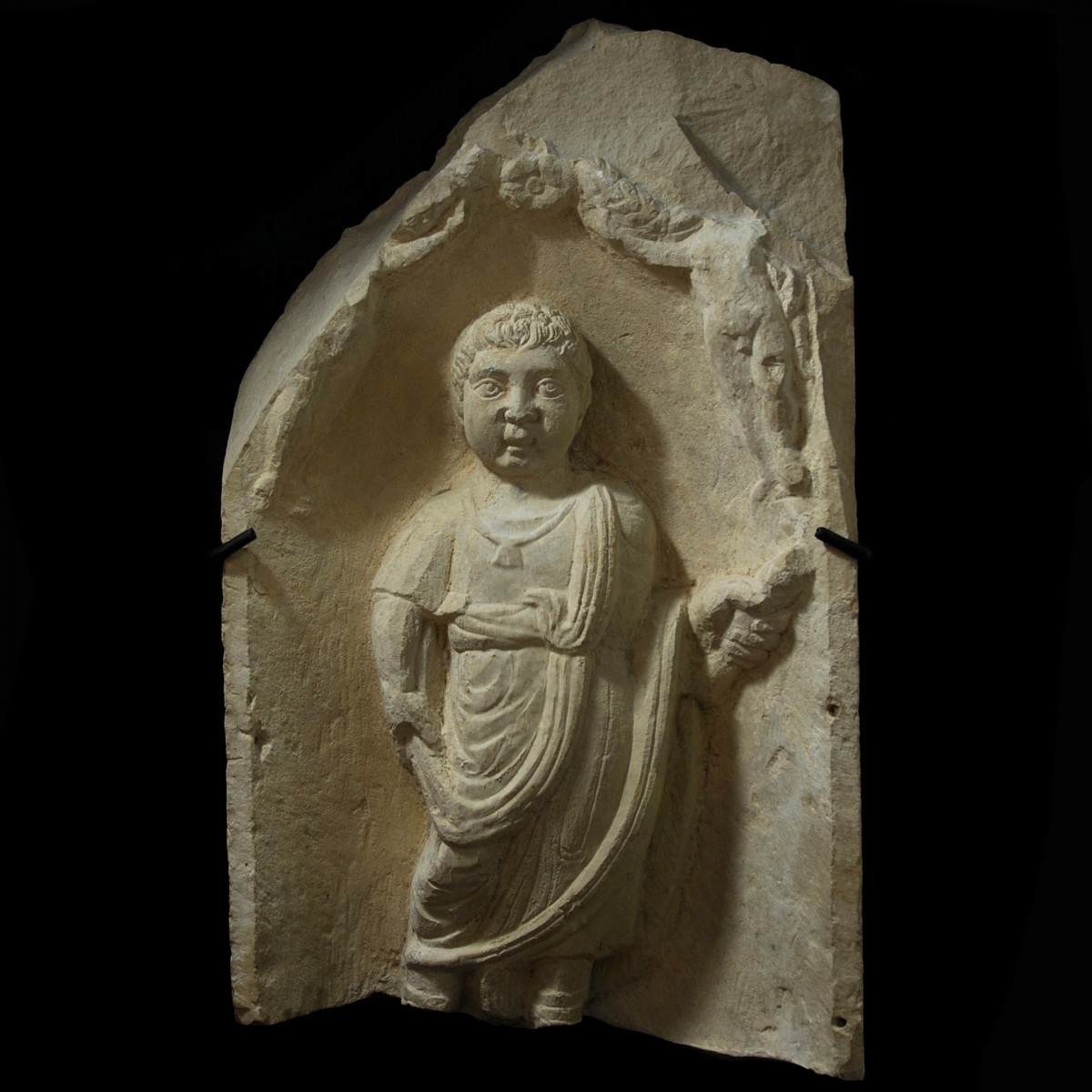
|
|
Für die deutsche Fassung bitte nach unten scrollen
|
|
Millennium Old Masterworks at ART&ANTIQUE in Salzburg
|
|
|
It will be the first art fair in Europe after many months. on 8 August ART&ANTIQUE will open in the Residenzhof of the city of Salzburg in parallel to the world famous Salzburger Festspiele. As the one and only gallery for ancient art in Austria we will present until 16 August selected highlights from our programme. The interest for the millennium old objects, which have been promoted by the organizer for several weeks, is absolutely overwhelming. We are looking forward to your visit and to a personal get-together!
|
In August it is of course still possible, upon appointment, to visit our successful exhibition "the work that has to be done" in cooperation with the contemporary artist Philip Patkowitsch. We are looking forward to walking with you through our showroom in Vienna.
|
|
|
|
|
|
Our Highlight of the Month:
|

|
|
|
|
|
|
Roman Empire – around 250 A.D.
|
Expressive marble head of an elderly woman or matron with the typical hairstyle of the Barracks emperors period. The patrician with an angular face, pronounced cheekbones and a wrinkled forehead. The mouth is finely curved and closed. The eyes looking vigilantly out from thick lids, iris and pupils are engraved. She has her hair parted in the middle and pulled back in thick curls behind her large ears to her neck. There it forms a roll and runs up to the top in a flat, braided tail. This hair fashion, which was popular among the fine ladies of the aristocratic families in the middle of the 3rd century, was popularized above all by the empresses Furia Sabinia Tranquillina (wife of Gordian III.) and Otacilia Severa (wife of Philippus Arabs), which is why the dating of this head is beyond any doubt. The ancient head sits on an extremely finely crafted bust from the 18th century with an inscription which reads "Iulia Maesa" (died 224/225 in Rome). Based on the above considerations, this attribution can be considered a generation too early.
|
Provenance: French private collection from the 18th century. Accompanied by a French antiquities passport.
Dimensions: 76 cm high
Price: 68 000 Euro
|
|
|
|
Selected Artworks of the Month:
|

|
|
|
|
|
|
Egypt – Old Kingdom, 5th or 6th Dynasty, 2504-22216 B.C.
|
Limestone fragment of a false door with a crossbar and a semi-cylindrical drum inscribed with recessed hieroglyphs. The inscription mentions the owner with the name Seshemnefer. False doors are part of the funerary architecture, they served as a bridge between this life and the afterlife. On the one hand the deceased could interact through this “door” with the posterity, on the other hand his surviving dependents can get in contact with him and present offerings in front thereof. According to reports this fragment comes from from the area around Saqqara. Mounted.
|
Provenance: Exported from Egypt prior to 1937. Thence private collection Joseph Altounian (1890-1954). Tajan Auction Paris on 13 November 2001, lot 38. Accompanied by a French antiquities passport.
Dimensions: 17.8 cm x 30 cm
Price: 6 000 Euro
|
|
|
|

|
|
|
|
|
|
Roman Empire – 2nd-3rd century A.D.
|
Wearable 18 carat gold ring with a Niccolo intaglio depicting Leda with a swan. Leda facing to the right, lying in front of the swan, which goes down on her with spread out wings. The scene is a popular erotic motive in ancient times. Zeus fell in love with Leda, the daughter of the Aetolian king, approached her in the form of a swan and impregnated her. The intaglio is set in a modern gold ring.
|
Provenance: From the estate of a French jeweller who set the ancient intaglios himself.
Dimensions: 2.3 cm high; 1.9 cm in diameter; 13.9 gram
Price: 3 800 Euro
|
|
|
|
|
|
|
|
|
Luristan – Early 1st millennium B.C.
|
Massive bronze axe head with a cylindrical shaft hole topped by a seated lion. The animal in a lurking position with tense limbs. The finales of the shaft hole with a breaded cord design. Originating from the shaft hole a protruding, semi-circular setting with a notched ray decoration, where the blade was once mounted. Between the shaft hole and the blade setting a protruding eye. The entire axe head is therefore a stylized animal head, possibly of a bird of prey’s one, depicted with a tied up beak. An impressive example of Luristan’s bronze art. Mounted.
|
Provenance: New York private collection, acquired in the 1980s by Henry Anavian, Sumer Gallery, New York, USA.
Dimensions: 6 cm x 7.5 cm
Price: 2 400 Euro
|
|
|
|
|
|
|
|
|
|
|
Western Greece – 4th-3rd century B.C.
|
Small, figurative vase of black lustre, which is decorated on the front below the estuary with a figurative depiction of light clay. Depicted is a seated youth with long, wavy hair, waist and legs draped with a himation. The right leg is placed on a pedestal, in his right hand holding an object. The youth is possibly Adonois, seated on a throne with a sideways protruding backrest, its ends with rosettes. A rare Hellenistic vase from Western Greece.
|
Provenance: Swiss collection Donati 1970s. Thence Galerie Cahn, Basel. Published in Cahn’s Quarterly 2/2016, page 6.
Dimensions: 10.6 cm high
Price: 4 800 Euro
|
|
|
|

|
|
|
|
Roman Empire/Province Africa – 3rd century A.D.
|
Fragment of a limestone stele from the Roman province Africa (today Tunesia) depicting a standing youth with a chubby face and thick, wavy hair. He wears a tunic and holds a scroll in his left hand turned outwards. He holds with his right hanging hand the end of the toga which is thrown over his left shoulder. The bulla, worn with a band around his neck, indicates that he has not reach adulthood yet. The Romans adopted from the Etruscans the tradition to, right after birth, put around children a bulla, which enclosed an amulet in the cavity, to protect against spell, especially the evil eye. The bulla and the toga emphasise that the youth, although originating from the province Africa, was considered as a Roman citizen. His “Romanitas” is also underlined by the scroll, which not only stands for scholarship, but should also be a reference to the depiction of senators, scholar and emperors of the empire. Above the youth the bodies of two genii can be seen, holding a garland with a central rosette above the youth’s head. For the type of the youth with bulla, toga and scroll see the stele in the Yale University Art Gallery with inventory number 1984.121. Mounted.
|
Provenance: French private collection Saint-Raphaël, accompanied by a French antiquities passport.
Dimensions: 56 cm x 33 cm
Price: 8 000 Euro
|
|
|
|
|
|
|
|
|
Mesopotamia – Early 1st millennium B.C.
|
Amulet of a lion made of light, finely banded agate. The lion seated with paws facing forward and the head turned to the side. The mane is thickly engraved at the front and the back. Its long tail in high relief at the front is swung over the pelvis. A perforation through the body for suspension.
|
Provenance: American private collection, acquired in the 1980s. Last in a New York auction house.
Dimensions: 3.1 cm long
Price: 600 Euro
|
|
|
|
|
|
|
|
|
|
|
Cyprus – 2nd-1st century B.C.
|
Formed from a mould terracotta statuette of a standing woman in a long chiton with a himation thrown over the shoulder. She has her left hand placed against her hip. The right arm hangs down sideways along the body, the hand holds an end of the coat. The woman wears a thickly breaded head dress, her hair is pulled back to a bun. The statuette stands on a round plinth. On the back a label with an old collection label. Another collection number is written with a pencil on the base. Possibly from Kythrea. Compare for the round base, the hair dress and the gown the statuette from the Metropolitan Museum of Art with the accession number 74.51.16.96. Accompanied by a TL test dating 8 August 2019 confirming the age of the statuette.
|
Provenance: French private collection Joseph Altounian (1890-1954). Since then in a family estate. Accompanied by a French antiquities passport.
Dimensions: 13.3 cm high
Price: 1 200 Euro
|
|
|
|
|
|
|
|
|
Luristan – Early 1st millennium B.C.
|
Bronze clothing pin with a rectangular section, tapering towards the end. On top at a right angle a protruding plinth with a seated winged hybrid being. The mythological creature with a strong abdomen, raised tail and elevated wings. The oversized head with a human face and sideways protruding horns. Needle and bull decorated with fine incisions. Mounted.
|
Provenance: New York private collection, acquired in the 1980s from Henry Anavian, Sumer Gallery, New York.
Dimensions: 12 cm long
Price: 800 Euro
|
|
|
|
|
|
|
|
|
|
|
Greece/Canosa – 3rd century B.C.
|
Elegantly formed oinochoe with a broad, hemispherical corpus and horizontal shoulder with a rib on the passage to the slender, long neck. On top a finely drawn trefoil spout. The vase stands on a profiled foot. The handle starts on the shoulder, runs vertically up and significantly surpasses the spout, before finishing at the rim thereof. The typical white engobe, typical for ceramics from Canosa, is extensively still preserved.
|
Provenance: Old Belgian private collection. Thence with André Munter Archeologie, Brussels, Belgium. There acquired on 7 March 2005 by another Belgian private collection. Accompanied by an original certificate from André De Munter, Brussels, Belgium. On the reverse of the certificate a sticker with a stamp of a court inspection dated 26 June 2009 with the signature of the law clerk F. Coene N.
Dimensions: 22 cm high
Price: 600 Euro
|
|
|
|
|
|
Jahrtausendealte Meisterwerke auf der ART&ANTIQUE in Salzburg
|
Es ist die erste Kunstmesse in Europa nach vielen Monaten. Am 8. August eröffnet die ART&ANTIQUE im Residenzhof der Stadt Salzburg parallel zu den weltberühmten Salzburger Festspielen. Als einzige Galerie für antike Kunst in Österreich werden wir dort bis 16. August ausgewählte Highlights aus unserem Programm zeigen. Das Interesse an den jahrtausendealten Objekten, die seit einigen Wochen vom Messe-Veranstalter beworben werden, ist dabei geradezu überwältigend. Wir freuen uns auf Ihren Besuch und auf ein persönliches Treffen!
|
Im August wird es natürlich weiterhin nach vorheriger Vereinbarung möglich sein, unsere erfolgreiche Ausstellung "the work that has to be done" in Kooperation mit dem zeitgenössischen Künstler Philip Patkowitsch zu besichtigen. Wir freuen uns auf einen Rundgang mit Ihnen in unserem Showroom in Wien!
|
|
|
|
Unser Highlight des Monats:
|
|
Römisches Reich – um 250 n. Chr.
|
Ausdrucksstarker Marmorkopf einer älteren Frau oder Matrona mit der typischen Frisur der Soldatenkaiserzeit. Die Patrizierin mit kantigem Gesicht, ausgeprägten Wangenknochen und faltiger Stirn. Der Mund fein geschwungen und geschlossen. Die Augen blicken wach aus dicken Lidern hervor, Iris und Pupille sind graviert. Sie hat das Haar in der Mitte gescheitelt und in dichten Wellen hinter die großen Ohren in den Nacken geführt. Dort bildet es eine Rolle und läuft dann in einem flachen, geflochtenen Zopf wieder bis in den Scheitel hinauf. Diese Haarmode, die unter den feinen Damen der aristokratischen Familien Mitte des 3. Jahrhunderts weit verbreitet war, wurde vor allem von den Kaiserinnen Furia Sabinia Tranquillina (Gattin von Gordian III.) sowie Otacilia Severa (Gattin des Philippus Arabs) populär gemacht, weshalb eine Datierung dieses Kopfes zweifelsfrei ist. Der antike Kopf sitzt auf einer überaus fein gearbeiteten Büste aus dem 18. Jahrhundert, der unten mit der Inschrift „Iulia Maesa“ (gestorben 224/225 in Rom) versehen ist. Diese Zuweisung darf aufgrund oben genannter Überlegung als eine Generation zu früh angesehen werden.
|
Provenienz: Franzöische Privatsammlung aus dem 18. Jahrhundert. Mit französischem Antikenpass.
Höhe: 76 cm
Preis: 68.000 Euro
|
|
|
|
Ausgewählte Kunstwerke des Monats:
|
|
Ägypten – Altes Reich, 5. Oder 6. Dynastie, 2504-2216 v. Chr.
|
Kalkstein-Fragment einer Scheintüre mit Querbalken und Rolle, die in versenkten Hieroglyphen beschrieben sind. Die Inschrift nennt den Besitzer mit dem Namen Seschemnefer. Scheintüren sind Teil der Grabarchitektur, sie dienen als Brücke zwischen Diesseits und Jenseits. Einerseits kann der Verstorbene über diese „Tür“ auf die Nachwelt einwirken, andererseits können seine Hinterbliebenen mit ihm in Kontakt treten und davor Gaben bringen. Dem Vernehmen nach aus der Region um Sakkara. Gesockelt. Oberfläche mit Bestoßungen wie im Foto sichtbar.
|
Provenienz: Vor 1937 aus Ägypten ausgeführt. Danach Privatsammlung Joseph Altounian (1890-1954). Tajan Auction Paris vom 13. November 2001, Los 38. Mit französischem Antikenpass.
Höhe: 17,8 cm x 30 cm
Preis: 6.000 Euro
|
|
|
|
|
Römisches Reich – 2.-3. Jahrhundert n. Chr.
|
Tragbarer 18-Karat-Goldring mit „Niccolo“ Gemme, die Leda mit Schwan zeigt. Leda mit Blick nach rechts liegt vor dem Schwan, der mit ausgebreiteten Flügeln auf ihr niedergeht. Die Szene ist ein beliebtes erotisches Motiv der Antike. Zeus verliebte sich in Leda, die Tochter des ätolischen Königs, näherte sich ihr in Form eines Schwanes und schwängerte sie. Die Gemme ist in einem modernen Goldring gefasst.
|
Provenienz: Aus dem Nachlass eines französischen Juweliers, der die antiken Gemmen selbst fasste.
Höhe: Ringhöhe 2,3 cm; Durchmesser 1,9 cm; Gewicht 13,9 Gramm
Preis: 3.800 Euro
|
|
|
|
|
Luristan – Anfang 1. Jahrtausend v. Chr.
|
Schwerer Axtkopf aus Bronze mit zylindrischem Schaftloch, auf dem ein stilisierter Löwe aufsitzt. Das Tier in Lauerstellung mit angespannten Gliedmaßen. Die Enden des Schaftloches mit geflochtenem Schnurdesign. Vom Schaftloch abstehend die halbrunde Fassung mit gekerbtem Strahlen-Dekor, in der die einst eiserne Klinge befestigt war. Zwischen Schaftloch und Klingenfassung ein hervorstehendes Auge. Der gesamte Axtkopf ist damit als stilisierter Tierkopf, wohl der eines Raubvogels, mit verschnürtem Schnabel erkennbar. Ein eindrucksvolles Beispiel der Bronzekunst Luristans. Gesockelt.
|
Provenienz: New Yorker Privatsammlung, erworben in den 1980er Jahren bei Henry Anavian, Sumer Gallery, New York.
Dimensionen: 6 cm x 7.5 cm
Preis: 2.400 Euro
|
|
|
|
|
Westliches Griechenland – 4.-3. Jahrhundert v. Chr.
|
Kleine, figurative Vase aus schwarzem Glanzton, die vorne unter der Mündung von einer figurativen Darstellung aus hellem Ton geschmückt wird. Dargestellt ist ein sitzender Jüngling mit langem, gewelltem Haar, um Hüfte und Beine ein Himation drapiert. Das rechte Bein ist auf ein Podest gestellt, in der rechten Hand hält er einen Gegenstand. Der Jüngling, möglicherweise als Adonis zu erkennen, sitzt auf einem Thron mit seitlich auslandender Rückenlehne, deren Enden mit Rosetten besetzt sind. Eine seltene hellenistische Vase aus Westgriechenland.
|
Provenienz: Schweizer Sammlung Donati 1970er Jahre. Danach Galerie Cahn, Basel. Publiziert in Cahn’s Quarterly 2/2016, Seite 6.
Höhe: 10,6 cm
Preis: 4.800 Euro
|
|
|
|
|
Römisches Reich/Provinz Africa – 3. Jahrhundert n. Chr.
|
Fragment einer Kalkstein-Stele aus der römischen Provinz Africa (heute Tunesien), das einen stehenden Knaben mit pausbäckigem Gesicht und dichtem, gelocktem Haar zeigt. Er trägt eine Tunika und hält in seiner nach außen gehaltenen linken Hand eine Schriftrolle. Mit der herabhängenden Rechten hält er das Ende seiner um die linke Schulter geworfenen Toga. Die Bulla, die auf einem Band um den Hals trägt verrät, das er das Erwachsenenalter noch nicht erreicht hat. Die Römer übernahmen von den Etruskern den Brauch, Kindern unmittelbar nach der Geburt zur Abwehr von Zauber, vor allem des Bösen Blicks, eine Bulla umzuhängen, in deren Hohlraum sich ein Amulett befand. Bulla und Toga machen deutlich, dass der Knabe, obwohl aus der Provinz Afrika stammend, als römischer Bürger galt. Seine „Romanitas“ wird auch durch die Schriftrolle deutlich, die nicht nur für Gelehrsamkeit steht, sondern auch an die Darstellungen von Senatoren, Gelehrten und Kaisern des Reiches erinnern soll. Über dem Knaben erkennt man noch die Körper zweier Genien, die eine Girlande mit zentraler Rosette über dem Kopf des Knaben halten. Vergleiche zum Typus des Knaben mit Bulla, Toga und Schriftrolle die Stele in Yale University Art Gallery mit der Inventarnummer 1984.121. Gesockelt.
|
Provenienz: Französische Privatsammlung Saint-Raphaël, mit französischem Antikenpass.
Dimensionen: 56 cm x 33 cm
Preis: 8.000 Euro
|
|
|
|
|
Mesopotamien – Anfang 1. Jahrtausend v. Chr.
|
Amulett eines Löwen aus hellem, fein gebändertem Achat. Der Löwe sitzend mit nach vorne gerichteten Pfoten und zur Seite gedrehtem Kopf. Die Mähne ist vorne und hinten dicht graviert. Sein langer Schwanz ist in erhabenem Relief vorne über das Becken geschwungen. Quer durch den Körper eine Lochung zur Aufhängung.
|
Provenienz: Amerikanische Privatsammlung, erworben in den 1980er Jahren. Zuletzt in einem New Yorker Auktionshaus.
Länge: 3,1 cm
Preis: 600 Euro
|
|
|
|
|
Zypern – 2.-1. Jahrhundert v. Chr.
|
Aus der Form gearbeitete Terrakotta-Statuette einer stehenden Frau im langen Chiton mit um die Schulter geworfenem Himation. Sie hat ihre linke Hand in die Hüfte gestützt. Der rechte Arm hängt seitlich am Körper herab, die Hand hält ein Mantelende. Die Frau trägt einen dick geflochtenen Kopfschmuck, das Haar ist hinten zu einem Knoten gebunden. Die Statuette steht auf einer runden Plinthe. Auf der Rückseite ein Etikett mit alter Sammlungsnummer. Eine weitere Sammlungsnummer mit Bleistift auf die Basis geschrieben. Wohl aus Kythrea. Vergleiche zur runden Basis, dem Haarschmuck und dem Gewand die Statuette im Metropolitan Museum of Art mit der Accession Nummer 74.51.16.96. Mit TL-Test vom 8. August 2019, der das Alter der Statuette bestätigt.
|
Provenienz: Französische Privatsammlung Joseph Altounian (1890-1954). Seitdem in Familienbesitz. Mit französischem Antikenpass.
Höhe: 13,3 cm
Preis: 1.200 Euro
|
|
|
|
|
Luristan – Anfang 1. Jahrtausend v. Chr.
|
Gewandnadel mit viereckigem Querschnitt aus Bronze, die nach unten spitz zuläuft. Oben im rechten Winkel eine abstehende Plinthe, auf der ein geflügeltes Mischwesen aufsitzt. Die mythologische Kreatur mit kräftigem Hinterleib, aufgestelltem Schwanz und angehobenen Flügeln. Der übergroße Kopf mit menschlichem Gesicht und seitlich abstehenden Hörnern. Nadel und Bulle mit feinem Ritzdekor verziert. Gesockelt.
|
Provenienz: New Yorker Privatsammlung, erworben in den 1980er Jahren bei Henry Anavian, Sumer Gallery, New York.
Länge: 12 cm
Preis: 800 Euro
|
|
|
|
|
Griechenland/Canosa – 3. Jahrhundert v. Chr.
|
Elegant geformte Oinochoe mit breitem, halbrunden Korpus und waagrechter Schulter mit Rippe am Übergang zum schlanken, langen Hals. Oben ein fein gezogener Kleeblattausguss. Die Vase steht auf einem profilierten Standbein. Der Henkel setzt an der Schulter an, verläuft vertikal nach oben und überragt deutlich den Ausguss, ehe er am Rand desselben wieder ansetzt. Die für Keramik aus Canosa typische weiße Grundierung ist noch großflächig erhalten.
|
Provenienz: Alte belgische Privatsammlung, danach André Munter Archeologie, Brüssel. Dort erworben am 7. März 2005 von einer anderen belgischen Sammlung. Mit Original-Zertifikat von André De Munter Archéologie, Brüssel. Auf der Rückseite des Zertifikats ein Aufkleber mit Stempel einer Gerichtsbeschau vom 26. Juni 2009 mit der Unterschrift des Gerichtsschreibers F. Coene N.
Höhe: 22 cm
Preis: 600 Euro
|
|
|
|
|
|
|
|

|
|
|
|